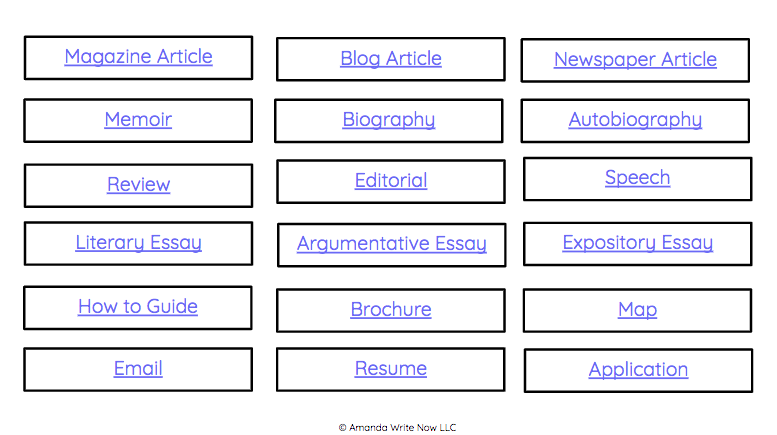
The informational writing genre is huge! There are so many components to this type of writing that need to be considered before teaching your informational writing unit.
The teacher needs to decide on the sub-genre: how-to article, speech, blog article, podcast episode, YouTube video script, the sky is the limit! Teachers might also consider giving students the option to choose their sub-genre. Doing this will definitely increase student motivation!
Students need to learn how to come up with ideas, narrow their topic, research their topic, take notes, put learning into their own words, understand copyright, write a hook, use anecdotes, utilize nonfiction text features and so much more! Here’s a comprehensive list of informational writing vocabulary for your reference.
In this blog post you will find five mini lessons, in the order I would teach them, for your next informational writing unit. These mini lessons have been created based on standards and using common struggles students face with this type of writing.
So let’s get started!
Students need to understand the many sub-genres that informational writing contains. They need exposure to lots of mentor texts. You could create something like the picture below for your students. It is a clickable Google Slideshow to show students that informational writing is everywhere and overlaps with other genres such as argumentative writing. Argumentative writing includes informational components. If you don’t have time to search for mentor texts check out this resource that includes an editable version of the slideshow pictured below.

Once students are familiar with this genre you need to narrow down which sub-genre they will write and then get down to brainstorming! The best way I’ve found to help students brainstorm is with lists. Have students lists questions they are curious about, hobbies, passions and topics they might consider writing about. They need pages and pages of lists.
But, not all students need to spend a ton of time listing. Some students might know exactly what they want to write about from the very beginning. For those students, allow them to get right to the drafting stage. No research yet! You don’t want students copying articles they find online. Instead, force students to write all they know first, before diving into research.
Once students have chosen a broad topic they are interested in informing an audience of their peers about, you’ll want to have them spend a silent class period writing nonstop! Call it a writing race, set a timer and tell students their goal is to write two full pages on their topic, then say, “ready-set-go”.
Yes, students will struggle during this process. Students will say, “I don’t know that much about this, I need to research!” and to this you should reply, “Awesome! Write down all your questions, just keep writing, don’t put your pen/pencil down!”.
During this drafting stamina session, take notes about your observations of students. Who is struggling with this task? Who seems perfectly at ease writing all they know without stopping? Keep a class roster on a clipboard and use symbols to notate which students are doing awesome and which are struggling.
Often students will pick very broad topics in the beginning and that’s perfectly normal. It’s our job to show students how to narrow their topic and why it’s important to do so. The first way you could have students narrow is by having them list broad topics first (they already did this in mini lesson two) then have them write new lists from items on their broad list. This new list can be questions about the broad topic. A second way to have students narrow their topic is by analyzing the titles of mentor texts and emulating those titles using their own topic.